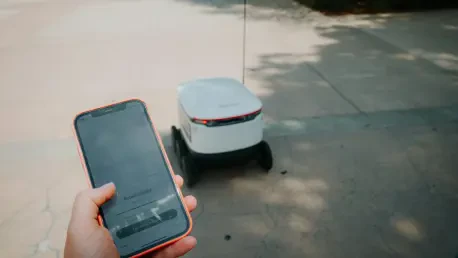In recent years, AI-driven autonomous vehicles have emerged as a significant innovation, promising to transform the transportation industry. A crucial turning point lies in these vehicles adopting human-like driving behaviors, including assertive tendencies typically seen in manual driving, yet in a manner that augments safety profiles. Although these behaviors may seem contrary to traditional perceptions of AI precision, the strategic integration of such tendencies could enhance road safety. Users and experts alike observe that autonomous vehicles are beginning to exhibit assertiveness in their driving habits, paralleling human behaviors that, when executed accurately, may contribute to safer road operations.
Key Features and Technology Components
Advanced Sensing and Perception Systems
Central to the functionality of AI-driven autonomous vehicles are advanced sensing and perception systems. These systems act as the vehicle’s eyes and ears, detecting and interpreting the surrounding environment. Sensors, such as cameras, radar, and lidar, work in harmony to create real-time, 360-degree views of the vehicle’s surroundings. This technology is pivotal in navigating complex road scenarios, allowing the vehicles to make informed, safe decisions based on dynamic conditions, such as traffic flow and pedestrian activity.
Machine Learning and Decision-Making Algorithms
Another cornerstone of autonomous vehicle technology is machine learning and decision-making algorithms. These sophisticated algorithms allow vehicles to learn from past experiences and adapt their driving strategies for future encounters. By analyzing vast data sets generated from human drivers across expansive distances, AI algorithms fine-tune the vehicles’ logic to mirror the assertiveness required in various situations. Tesla’s Shadow Mode exemplifies this technique by observing real-time human driving behaviors to refine autonomous operations. The challenge is to ensure these algorithms replicate exemplary driving patterns — assertive yet cautious — that contribute positively to road safety, avoiding deleterious behaviors such as speeding or reckless driving.
Recent Developments and Trends
In recent developments, AI-driven autonomous vehicles have begun mimicking certain human-like driving behaviors, such as honking and executing sharper turns. These patterns typically signal aggression or assertiveness; however, when applied carefully, they enhance navigational capabilities. Companies like Waymo have focused on integrating these behaviors into their autonomous systems. Waymo’s Jaguar SUVs are tailored for robotaxi services, showing confidence in high-traffic areas like San Francisco by performing maneuvers that necessitate slight assertiveness, thus reflecting confident yet safe driving practices.
Real-World Applications and Use Cases
AI-driven autonomous vehicles find applications across varied industries, particularly in urban mobility and logistics. Waymo’s robotaxi service and Zoox’s advanced communication strategies exemplify autonomous technology’s adaptability to existing traffic standards and pedestrian interactions. By using sophisticated audio systems, companies like Zoox are prioritizing communication through sound cues, enabling vehicles to effectively interact with their environment. This refinement ensures that autonomous vehicles can communicate intentions clearly, paralleling human cues like eye contact or gestures, thus facilitating an environment of mutual understanding on roads.
Challenges and Limitations
Despite marked advancements, AI-driven autonomous vehicles face several challenges. Technical hurdles include the adaptation of AI algorithms to unpredictable driving conditions and ensuring the fine line between caution and assertiveness is maintained. Regulatory and market barriers further complicate widespread adoption, with evolving regulations often lagging behind technological capabilities. Moreover, skeptics note the need for these vehicles to anticipate unforeseen elements beyond sensory reach. Addressing these challenges requires ongoing development, guided by strategic safety protocols and legislative adaptation to AI advancements.
Future Outlook and Developments
Looking forward, AI-driven autonomous vehicles are on a trajectory toward seamless integration with human-operated traffic ecosystems. Future developments may witness breakthroughs in sensory technology and algorithms that further refine the vehicles’ ability to predict and react to complex scenarios efficiently. There is also a growing interest in personalized passenger experiences, allowing individuals to tailor trips according to preferences, such as travel speeds and interactions with co-passengers. These potential advancements indicate a profound transformation in the transportation landscape, emphasizing AI’s role in safer and more personalized mobility solutions.
Conclusion
AI-driven autonomous vehicles, by adopting human-like driving behaviors in a controlled manner, offer promise for enhanced safety on roads. These vehicles excel by leveraging advanced perception and machine learning, thus paving the way for a nuanced approach towards assertiveness in driving. As this technology advances, strategic communication between vehicles and their environment becomes pivotal, ensuring harmonious coexistence with human drivers. Looking ahead, the focus is on refining these technologies to cultivate a comprehensive ecosystem where AI-driven autonomous vehicles and human-operated traffic flow seamlessly.









